Blog - Foot Doctor, Chambersburg and McConnellsburg, PA
FDA Takes Action that Changes Gout Treatment
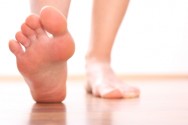 A study published in the Journal of General Internal Medicine found that the use of popular grout treatment, Colcrys, has recently decreased due to an action taken by the Food and Drug Administration that resulted in lower production of colchicine and increased cost of the product. Colcrys was granted market exclusivity by the FDA in 2010 for three years making the cost of colchicine jump from $0.09 to five dollars per tablet. The FDA took this action to decrease the use of the gout medicine in addition to the use of clarithromycin, since the use of both drugs together is potentially very dangerous. Accordingly this action taken by the FDA will result in over reliance in alternatives such as nonsteroidal anti-inflammatory drugs or corticosteroids for gout treatment.
A study published in the Journal of General Internal Medicine found that the use of popular grout treatment, Colcrys, has recently decreased due to an action taken by the Food and Drug Administration that resulted in lower production of colchicine and increased cost of the product. Colcrys was granted market exclusivity by the FDA in 2010 for three years making the cost of colchicine jump from $0.09 to five dollars per tablet. The FDA took this action to decrease the use of the gout medicine in addition to the use of clarithromycin, since the use of both drugs together is potentially very dangerous. Accordingly this action taken by the FDA will result in over reliance in alternatives such as nonsteroidal anti-inflammatory drugs or corticosteroids for gout treatment.
Gout is a foot condition that requires certain treatment and care. If you have any concerns regarding gout, consult with Dr. Steven Schwartz of Pennsylvania. Our doctor will assist you with all of your foot and ankle needs.
What is Gout?
Gout is a type of arthritis caused by a buildup of uric acid in the bloodstream. It often develops in the foot, especially the big toe area, although it can manifest in other parts of the body as well. Gout can make walking and standing very painful and is especially common in diabetics and the obese.
People typically get gout because of a poor diet. Genetic predisposition is also a factor. The children of parents who have had gout frequently have a chance of developing it themselves.
Gout can easily be identified by redness and inflammation of the big toe and the surrounding areas of the foot. Other symptoms include extreme fatigue, joint pain, and running high fevers. Sometimes corticosteroid drugs can be prescribed to treat gout, but the best way to combat this disease is to get more exercise and eat a better diet.
If you have any questions, please feel free to contact our offices located in Chambersburg and Mcconnellsburg, PA. We offer the newest diagnostic and treatment technologies for all of your foot ankle injuries.
Margaret Dabbs Foot Advice for the Elderly
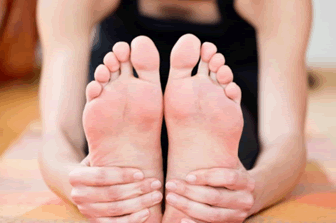 Margaret Dabbs has stated that the key to keeping older feet looking young and healthy is to just give the lower extremities some care. Dabbs states that with age the sweat glands in the feet stop working, making them drier than normal. Elderly individuals should moisturize and file dry skin at least once a week to maintain the hydration levels of the feet. Dabbs also recommends wearing shoes that are wider and more supportive with age.
Margaret Dabbs has stated that the key to keeping older feet looking young and healthy is to just give the lower extremities some care. Dabbs states that with age the sweat glands in the feet stop working, making them drier than normal. Elderly individuals should moisturize and file dry skin at least once a week to maintain the hydration levels of the feet. Dabbs also recommends wearing shoes that are wider and more supportive with age.
Proper foot care is something many older adults forget to consider. For more information, consult with Dr. Steven Schwartz of Pennsylvania. Our doctor will assist you with all of your podiatric concerns.
The Elderly and their Feet
As we age we start to notice many changes in our body, but the elder population may not notice them right away. Medical conditions may prevent the elderly to take notice of their foot health right away. Poor vision is a lead contributor to not taking action for the elderly.
Common Conditions
Neuropathy – can reduce feeling in the feet, and can hide many life threating medical conditions.
Reduced flexibility – prevents the ability of proper toenail trimming, and foot cleaning. If left untreated, it may lead to further medical issues.
Foot sores – amongst the older population can be serious before they are discovered. Some of the problematic conditions they may face are:
Gouging toenails affecting nearby toe
Shoes that don’t fit properly
Pressure sores
Loss of circulation in legs & feet
Edema & swelling of feet and ankles
Susceptible Infections
Diabetes and poor circulation can cause general loss of sensitivity over the years, turning a simple cut into a serious issue.
If you have any questions, please feel free to contact our offices in Chambersburg and Mcconnellsburg, PA. We offer the newest diagnostic and treatment technologies for all your foot and ankle needs.
Young Student Breaks Ankle after Getting Hit by a Car at Bus Stop
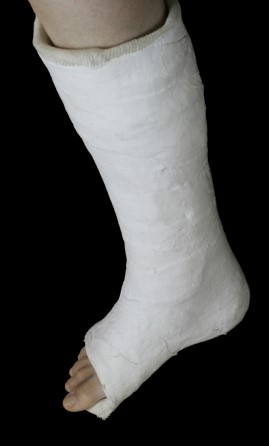 A student from Berlin, CT was injured and suffered a broken ankle after running into oncoming traffic. According to the police report, the student was supposed to get onto a school bus, but did not want to go to school. This resulted in the young boy running into the street where a car swerved to avoid hitting him. The child was then transported to Hartford Hospital where he was treated for a broken ankle. The driver of the car was not charged.
A student from Berlin, CT was injured and suffered a broken ankle after running into oncoming traffic. According to the police report, the student was supposed to get onto a school bus, but did not want to go to school. This resulted in the young boy running into the street where a car swerved to avoid hitting him. The child was then transported to Hartford Hospital where he was treated for a broken ankle. The driver of the car was not charged.
Broken ankles need immediate treatment. If you have any concerns about your feet and ankles contact Dr. Steven Schwartz of Pennsylvania. Our doctor will treat your foot and ankle needs.
Broken Ankles
A broken ankle is experienced when a person fractures their tibia or fibula in the lower leg and ankle area. Both these bones are attached at the bottom of the leg and combine to form what we know to be our ankle.
When a physician is referring to a break of the ankle, he or she is usually referring to a break in the area where the tibia and fibula are joined to create our ankle joint. Ankles are more prone to fractures because the ankle is an area that suffers a lot of pressure and stress. There are some obvious signs when a person experiences a fractured ankle and the following symptoms may be present.
Symptoms of a Fractured Ankle
- Excessive pain when the area is touched or when any pressure is placed on the ankle
- Swelling around the area
- Bruising of the area
- Area appears to be deformed
If you suspect an ankle fracture, it is recommended to seek treatment as soon as possible. The sooner you have your podiatrist diagnose the fracture, the quicker you’ll be on the way towards recovery.
If you have any questions please feel free to contact our offices located in Chambersburg and Mcconnellsburg, PA. We offer the newest diagnostic tools and technology to treat your foot and ankle needs.
Nail Salon Safety Necessary in Preventing Infections and other Foot Ailments
 Nail salon safety is essential in avoiding catching fungal infections. Before making an appointment, it is recommended that customers first take a quick look around the salon to note cleanliness and see if nail technicians are washing their hands after each customer. As most salons don’t have technicians wear gloves like health care workers, hand washing is a standard of care. The sterility of nail tools should be ensured; tools should be soaked in a disinfectant such as Barbicide for 10 to 20 minutes, and the liquid should periodically be changed.
Nail salon safety is essential in avoiding catching fungal infections. Before making an appointment, it is recommended that customers first take a quick look around the salon to note cleanliness and see if nail technicians are washing their hands after each customer. As most salons don’t have technicians wear gloves like health care workers, hand washing is a standard of care. The sterility of nail tools should be ensured; tools should be soaked in a disinfectant such as Barbicide for 10 to 20 minutes, and the liquid should periodically be changed.
Nail salon safety is important for every day foot health. For more information about everyday foot care, consult with Dr. Steven Schwartz of Pennsylvania. Our doctorwill provide you with the foot- and ankle information you seek.
Every Day Foot Care
Often, people take care of their bodies, face and hair more so than they do for their feet. But the feet are a very important aspect of our bodies, and one that we should pay more attention to. After all, without our feet, we would not be able to perform most daily tasks. It is best to check your feet regularly to make sure there are no new bruises or cuts that you may not have noticed before, for example.
For dry feet, moisturizer can easily be a remedy and can be applied as often as necessary to the affected areas. Wearing shoes that fit well can also help you maintain good foot health, as well as making it easier to walk and do daily activities without the stress or pain of ill-fitting shoes, high heels, or even flip flops.
Also, wearing clean socks with closed shoes is important to ensure that sweat and bacteria do not accumulate within the shoe. Clean socks help to prevent athlete’s foot, fungi problems, bad odors, and can absorb sweat.
If you have any questions, please feel free to contact our offices located in Chambersburg and Mcconnellsburg, PA. We offer the newest diagnostic and treatment technologies for all your foot and ankle injuries.
Franck Ribery sustains Injury in Bayern Munich Game
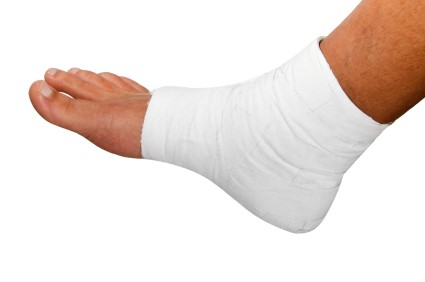 French winger Franck Ribery of Bayern Munich will be missing the rest of the season due to an ankle injury. Since March 11th, the winger has been out of the game and wearing a special shoe to help heal his ankle injury. “I am very sad, I’ve worked so hard for a quick comeback, but the ankle is not getting any better. It pisses me off,” Ribery told German magazine Kicker. Sport director Matthias Sammer would not confirm if Robery’s season is over.
French winger Franck Ribery of Bayern Munich will be missing the rest of the season due to an ankle injury. Since March 11th, the winger has been out of the game and wearing a special shoe to help heal his ankle injury. “I am very sad, I’ve worked so hard for a quick comeback, but the ankle is not getting any better. It pisses me off,” Ribery told German magazine Kicker. Sport director Matthias Sammer would not confirm if Robery’s season is over.
Sports related foot and ankle injuries need proper treatment before players can go back to their regular routines. If you have any concerns about your feet and ankles contact podiatrist Dr. Steven Schwartz of Pennsylvania. Our doctor will treat your foot and ankle needs.
Sport Related Foot and Ankle Injuries
Foot and ankle injuries are a common occurrence when it comes to athletes of any sport. While many athletes dismiss the initial aches and pains, the truth is that ignoring potential foot and ankle injuries can lead to serious problems. As athletes continue to place pressure and strain the area further, a mild injury can turn into something as serious as a rupture and may lead to a permanent disability. There are many factors that contribute to sports related foot and ankle injuries, which include failure to warm up properly, not providing support or wearing bad footwear. Common injuries and conditions athletes face, including:
- Plantar Fasciitis
- Plantar Fasciosis
- Achilles Tendinitis
- Achilles Tendon Rupture
- Ankle Sprains
Sports-related injuries are commonly treated using the RICE method. This includes rest, applying ice to the injured area, compression and elevating the ankle. More serious sprains and injuries may require surgery, which could include arthroscopic and reconstructive surgery. Rehabilitation and therapy may also be required in order to get any recovering athlete to become fully functional again. Any unusual aches and pains an athlete sustains must be evaluated by a licensed, reputable medical professional.
If you have any questions please feel free to contact our offices located in Chambersburg and Mcconnellsburg, PA. We offer the newest diagnostic tools and technology to treat your foot and ankle needs.
Florida Woman Suffers from Morton’s Neuroma and Finds Alternative Relief
 Ellyn Mayor of Florida says her foot pain began to feel like “walking on an annoying painful pebble.” This pain was later diagnosed as a Morton’s neuroma, the two nerves that join at the third and fourth toe that may have become pinched or swollen resulting in scar tissue. Morton’s neuroma is found to be more common in women than men because of the impractical and narrow footwear women often wear.
Ellyn Mayor of Florida says her foot pain began to feel like “walking on an annoying painful pebble.” This pain was later diagnosed as a Morton’s neuroma, the two nerves that join at the third and fourth toe that may have become pinched or swollen resulting in scar tissue. Morton’s neuroma is found to be more common in women than men because of the impractical and narrow footwear women often wear.
Initially Mayor received surgery for the foot ailment, but the neuroma grew back. She has since received injections that desensitize the neuroma and reduce the pain.
Morton’s Neuroma is a very uncomfortable condition to live with. If you think you have Morton’s neuroma contact podiatrist Dr. Steven Schwartz of Pennsylvania. Our doctor will treat your foot and ankle needs.
Morton’s Neuroma
Morton's neuroma is a painful foot condition that commonly affects the areas between the second and third or third and fourth toe, although other areas of the foot are also susceptible. Morton’s neuroma is caused by an inflamed nerve in the foot that is being squeezed and aggravated by surrounding bones.
What Increases the Chances of having Morton’s Neuroma?
- -Ill-fitting high heels or shoes that add pressure to the toe or foot
- -Jogging, running or any sport that involves constant impact to the foot
- -Flat feet, bunions, and any other foot deformities
Morton’s neuroma is a very treatable condition. Orthotics and shoe inserts can often be used to alleviate the pain on the forefront of the feet. In more severe cases, corticosteroids can also be prescribed. In order to figure out the best treatment for your neuroma, it’s recommended to seek the care of a podiatrist who can diagnose your condition and provide different treatment options.
If you have any questions please feel free to contact our offices located in Chambersburg and Mcconnellsburg, PA. We offer the newest diagnostic tools and treatments to treat your foot and ankle needs.
Read more about Morton’s neuroma.
Ronnie O’Sullivan contends with Shoe Issues
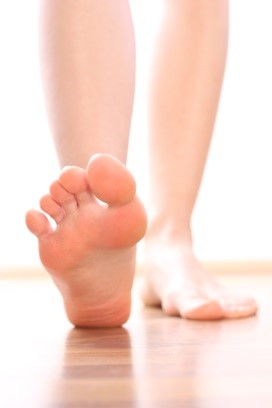 Ronnie O’Sullivan has been asking for help with his shoe problems with his World Championship showdown against Matthew Stevens. O’Sullivan has been using the same shoes for the last ten years that are now battered and problematic. During his most recent match, he played shoeless, breaking the dress code. “I’ve bought some new shoes before the tournament and it was a bad, bad move,” the pool star stated. Although O’Sullivan will not be fined for playing shoeless, he would like to be fitted with a comfortable new pair soon before the next match!
Ronnie O’Sullivan has been asking for help with his shoe problems with his World Championship showdown against Matthew Stevens. O’Sullivan has been using the same shoes for the last ten years that are now battered and problematic. During his most recent match, he played shoeless, breaking the dress code. “I’ve bought some new shoes before the tournament and it was a bad, bad move,” the pool star stated. Although O’Sullivan will not be fined for playing shoeless, he would like to be fitted with a comfortable new pair soon before the next match!
Whether you are an athlete or a waiter, working on the feet can be detrimental for your foot health. To learn more contact Dr. Steven Schwartz of Pennsylvania. Dr. Schwartz will treat your foot and ankle needs.
Working on Your Feet
Standing on your feet for long periods of time can cause stress and pain in your feet. Your whole body may experience change in terms of posture, back pain, bunions, callouses and or plantar warts. There are ways to avoid these conditions with proper foot care, smart choices and correct posture.
Positive Changes
Negative heeled shoe – choosing this shoe places the heel slightly lower than the ball of the foot. These are great for overall foot health. Find shoes that fit you correctly.
Go barefoot – our feet were not designed to be enclosed for hours, or all day. Try allowing yourself to expose your feet to air.
Eliminate Pain
Foot Exercises – performing simple exercises, incorporating yoga and stretches is beneficial. This will allow increased blood flow to the area and muscles of the foot.
Achilles tendon – stretching the foot out flat on the floor, will relax the calf muscles and tendon. These exercises can be performed almost anywhere. Make sure you add these exercises to your daily regimen.
With a little bit of this information and knowing more about foot health, you will notice changes. Foot stretches and proper footwear will help with pain and prevent further issues.
Keep your feet healthy and your body will thank you for it.
If you have any questions, please feel free to contact one of our offices in Chambersburg and Mcconnellsburg, PA. We offer the newest diagnostic and treatment technologies for all your foot care needs.
New Hammertoe Procedure Can Correct Pain and Aesthetic of the Condition
 Having shoes that correspond with today’s fashion is almost a necessary part of life today; unfortunately when people suffer from hammertoes it feels as though any shoe is too painful to wear.
Having shoes that correspond with today’s fashion is almost a necessary part of life today; unfortunately when people suffer from hammertoes it feels as though any shoe is too painful to wear.
Recently, a new procedure has been set in place where implants would be used to permanently straighten the joints in the foot. The implant, called TENFUSE, is said to be made out of cortical bone and will not have to be removed since the implant will eventually become a part of the bone. If the implant works as well as expected, this could be great news for the 10 to 20% of Americans suffering from the condition.
Hammertoes can be a painful condition to live with. If you are suffering from hammertoes, contact Dr. Stephen Schwartz DPM of Pennsylvania. Our doctor will treat your foot and ankle needs.
Hammertoe
Hammertoe is a foot deformity that affects the joints of the second, third, fourth, or fifth toes of your feet. It is a painful foot condition in which these toes curl and arch up, which can often lead to pain when wearing footwear.
Symptoms
- Pain in the affected toes
- Development of corns or calluses due to friction
- Inflammation
- Redness
- Contracture of the toes
Causes
- Genetics – people who are genetically predisposed to hammertoe are often more susceptible
- Arthritis – because arthritis affects the joints in your toes, further deformities stemming from arthritis can occur
- Trauma – direct trauma to the toes could potentially lead to hammertoe
- Ill-fitting shoes – undue pressure on the front of the toes from ill-fitting shoes can potentially lead to the development of hammertoe
Treatment
- Orthotics – custom made inserts can be used to help relieve pressure placed on the toes and therefore relieve some of the pain associated with it
- Medications – oral medications such as anti-inflammatories or NSAIDs could be used to treat the pain and inflammation hammertoes causes. Injections of corticosteroids are also sometimes used
- Surgery – in more severe cases where the hammertoes have become more rigid, foot surgery is a potential option
If you have any questions please contact our offices located in Chambersburg and Mcconnellsburg, PA. We offer the newest diagnostic and treatment technologies for all your foot and ankle needs.
Read More about Hammertoes
Real Madrid Star Ends Season Early With Broken Toe
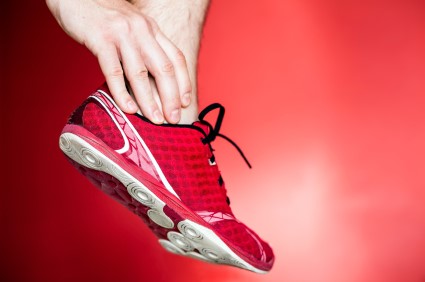 Gareth Bale of Real Madrid could have an early end to his season due to a broken toe. The winger injured the toe during training had to miss the team’s game against Rayo Vallecano. Coach Carlo Ancellotti does not want to put Bale at risk for it may hurt him in the long run. Experts believe that his toe may be fracture which will take considerably longer to heal. Bale’s club mate James Rodriguez faced a similar problem earlier in the season and was out for two months.
Gareth Bale of Real Madrid could have an early end to his season due to a broken toe. The winger injured the toe during training had to miss the team’s game against Rayo Vallecano. Coach Carlo Ancellotti does not want to put Bale at risk for it may hurt him in the long run. Experts believe that his toe may be fracture which will take considerably longer to heal. Bale’s club mate James Rodriguez faced a similar problem earlier in the season and was out for two months.
A broken toe is extremely painful and needs immediate attention. If you have any concerns about your feet contact podiatrist Dr. Steven Schwartz of Pennsylvania. Our doctor will treat your foot and ankle needs.
What to Know About a Broken Toe
Although most people try to avoid foot trauma such as banging, stubbing, or dropping heavy objects on their feet, the unfortunate fact is that it is a common occurrence. Given the fact that toes are positioned in front of the feet, they typically sustain the brunt of such trauma. When trauma occurs to a toe, the result can be a painful break (fracture).
Symptoms of a Broken Toe
- throbbing pain
- swelling
- bruising on the skin and toenail
- the inability to move the toe
- toe appears crooked or disfigured
- tingling or numbness in the toe
Generally, it is best to stay off of the injured toe with the affected foot elevated.
Severe toe fractures may be treated with a splint, cast, and in some cases, minor surgery. Due to its position and the pressure it endures with daily activity, future complications can occur if the big toe is not properly treated.
If you have any questions please feel free to contact our offices located in Chambersburg and Mcconnellsburg, PA. We offer the newest diagnostic tools and technologies to treat your foot and ankle needs.
Exercising the Feet is a Great Way to Prevent Future Injury
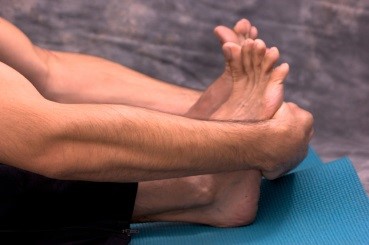 According to Dr. Howard Osterman, AMPA spokesperson, feet are the most neglected part of the body and many foot injuries occur because of overuse without the proper support. With the right amount of exercise of the feet, strength can be built and injury and be reduced. Osterman recommends trying to pick up a towel or marbles with the toes and standing on one foot for ten seconds to build arch strength. “Every exerciser is worried about the position of their ankles, knees, and hips, but so much of that stability starts at the foot,” Osterman advises.
According to Dr. Howard Osterman, AMPA spokesperson, feet are the most neglected part of the body and many foot injuries occur because of overuse without the proper support. With the right amount of exercise of the feet, strength can be built and injury and be reduced. Osterman recommends trying to pick up a towel or marbles with the toes and standing on one foot for ten seconds to build arch strength. “Every exerciser is worried about the position of their ankles, knees, and hips, but so much of that stability starts at the foot,” Osterman advises.
Exercising your feet regularly is a great way to prevent injuries. If you have any concerns about your feet contact Dr. Steven Schwartz of Pennsylvania. Our doctor will treat your foot and ankle needs.
Exercise for Your Feet
Exercise for your feet can help you to gain strength, mobility and flexibility in your feet. They say that strengthening your feet can be just as rewarding as strengthening another part of the body.
Your feet are very important and often we forget about them in our daily tasks. But it is because of our feet that are we able to get going and do what we need to. For those of us fortunate not to have any foot problems, it is an important gesture to take care of them to ensure its good health in the long run.
Some foot health exercises can include ankle pumps, tip-toeing, toe rise, lifting off the floor doing reps and sets, also flexing the toes and involving the shins may help too. It is best to speak with your doctor regarding how to do these fitness steps and how often is right for you. Everyone’s needs and bodies are different and it varies from individual to individual to determine what should be done for you to maintain strength in your feet.
Once you get into a routine of doing regular exercise, you may notice a difference in your feet and how strong they may become.
If you have any questions, please feel free to contact our offices located in Chambersburg and Mcconnellsburg, PA. We offer the newest diagnostic tools and technologies to treat your foot and ankle needs.
Read more about exercising your feet.

